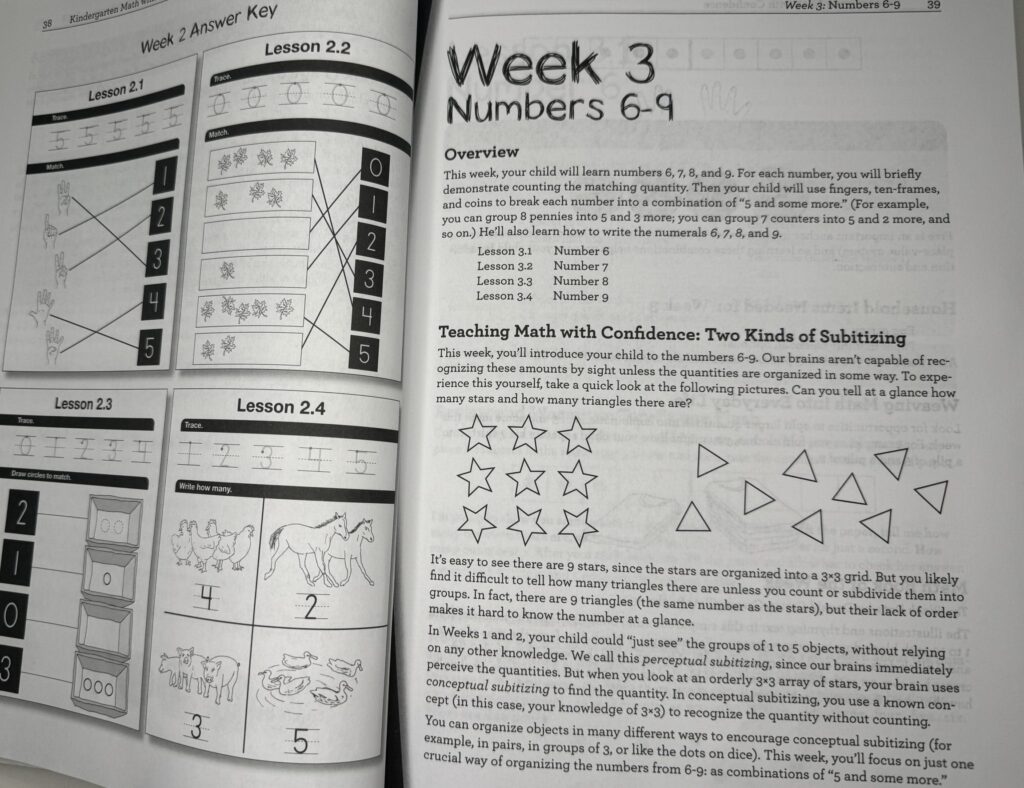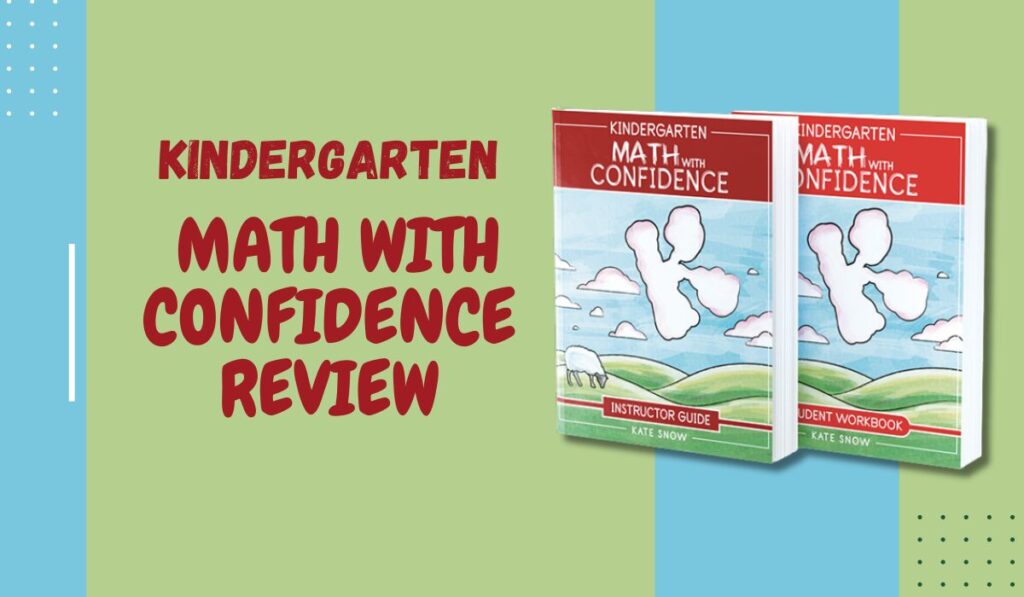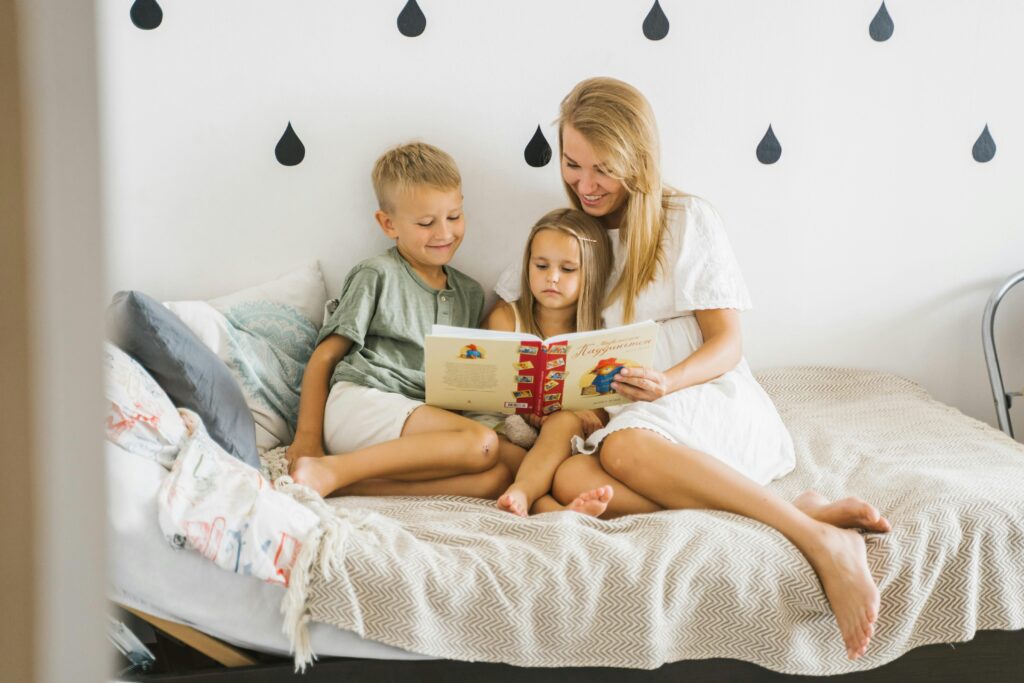I read and watched so many great reviews for this curriculum, so I decided to jump on the bandwagon and buy this curriculum by Kate Snow for my son’s Kindergarten year. It has been described as a “middle of the road” curriculum, not too hard, but not too easy. Read my Kindergarten Math with Confidence review from a perspective of a mom of a “not so mathy”, sweet little boy. It it too hard?
Price
You really can’t beat the price of this curriculum. For around $35 on Amazon you can get both the Teacher’s Guide and Student Workbook.
Ease of Use
One definite pro of this curriculum is how easy it is to use. You do need to compile your own math kit, but once you have everything, it is a completely scripted, open-and-go program.
Math Kit
For the counters, I used the Number Blocks MathLink Cubes from Amazon. It comes with it’s own little activities to play within this box, but I’ll be honest, it didn’t make any sense to me how to play the games. However, the counters work fine, and that’s what’s needed for the curriculum which you could find here from Learning Resources on Amazon. Or if you want an included activity box, I would get the one here from Learning Resources. Although I haven’t bought it, I wish this is the one I had just based on the Amazon pictures: the extra activities look simple and fun.
Kate Snow does mention in the intro of the book that you could also use any small items around the house as counters such as legos.
For the required pattern blocks, I used the Learning Resources Activity set. Similar to the counters, you don’t need the included activities and could just get the blocks here. The thing is, I started this program shortly after Christmas, and I used the activity boxes as Christmas presents for my kids! They love playing with both the counters and the pattern blocks, and after the math lesson is done, I will let them free play with the math manipulatives for awhile.
My daughter who is three years old also wants to be involved in whatever schooling I’m doing with my son. So when we are doing pattern block lessons in the curriculum, my daughter can also sit right there with us and play with the included activities and feel like she is “doing school” as well.
You will also need two packets of blank index cards, blank paper, coins (20 pennies, 20 nickels, 10 dimes) and pencils. Then you are ready to get started!
Curriculum Overview
There are 32 weeks in the program divided into 10 units. Each unit and week gives you an overview of what you will be covering. For every week, there are four lessons, and each lesson has one corresponding worksheet that your child will complete in the Student Workbook. The majority of the instruction happens using the scripted lessons in the Instructor Guide.
After completing the four lessons for the week, you also have an optional activity to “weave math into every day life” and one related picture book. I have been able to find many of these picture books at the library.
Unit 1: Where the Struggle Occurred
The first two weeks of unit 1 were pretty simple. You are covering numbers 0 to 5 and are introduced to pennies and nickels.
However, once we got to week 3 in Unit 1, my son started to struggle. You, as the parent, learn this math concept of “conceptual subitizing.” It basically means that we recognize quantities of numbers without counting. We do this by subdividing groups into smaller groups so we can recognize the number of items without counting.

In week 3 you are teaching numbers 6-9. The way you teach your kids to start conceptual subitizing is by making combinations of “5 and some more” using the horizontal ten frame. So for the number “6,” you learn to recognize it as “5 and 1 more.” Eventually your child should be able to master recognizing each of these numbers without counting.
It is not expected that you should master this after this chapter. However, I felt like my son needed more time to at least grasp the concept. We went ahead and moved onto week 4, “Combinations That Make 10,” which is the last week in Unit 1. This chapter caused even more frustration, and my son then decided that he didn’t like math after this chapter.
The Solution
After week 4 and unit 1 is completed, you are given a “Unit 1 Checkpoint.” My son struggled to recognize numbers 6, 7, 8, and 9 on a ten-frame without counting. He also struggled with the combinations that made 10. I did buy the digital download of the student workbook so we could practice the same exercises, but my son didn’t want to repeat those worksheets more than one or two more times. We also did repeat some of the same hands on activities in the teacher’s book, but again, he didn’t want to repeat all of those either.
At this point I started looking to outside resources to supplement before we moved on. There were no supplemental worksheets with the same ten-frame as used in this book. So I created my own! Click here to download 5 additional worksheets FOR FREE that correspond with Unit 1 math concepts.
Unit 2: Shapes
Unit 2 was much easier, which was a huge relief for my son’s relationship with math. You do continue practicing and mastering the concepts learned in unit 1 while also learning all about sorting, shapes, symmetry, and patterns.
Unit 3 and After:
We are just now starting unit 3. I will continue to update here as we progress through this curriculum!



